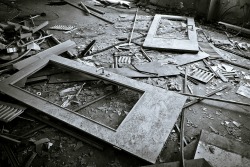Whether it’s mold hiding behind walls or asbestos insulating a pipe, nearly every renovation or redevelopment project will encounter some type of environmental hazard…
Regulatory requirements and industry practices are constantly evolving, which can make it easy for some project teams to be left in the dark. In part one of this series, we will discuss lead-based paint, polychlorinated biphenyl (PCB) caulking, and asbestos.
Lead-based paint
On April 22, 2010, the EPA established the Renovation, Repair and Paint (RRP) rule to protect occupants of pre-1978 housing or child-occupied facilities from lead-based paint hazards incumbent with RRP activities. Individual states may implement and enforce their own version and, to date, eleven states are taking this route. The remaining 39 states fall under the EPA’s version of the rule.
Minnesota Department of Health (MDH) developed a draft RRP rule that is being revised to reflect EPA requirements (no specific timeframe has been identified for promulgation). MDH, while not responsible for enforcing the RRP rule, provides assistance and refers contractors to the MPCA and/or the EPA Region 5 office.
OSHA requires that all paint impacted as part of a renovation be tested for lead content. If confirmed to contain lead above the regulated concentration of 0.5 percent by weight (lab testing) or 1 milligram per square centimeter (mg/cm2) (portable x-ray fluorescence [XRF] testing), then the contractors must be RRP trained and certified. RRP rules require personal protective equipment (PPE), dust control methods, proper cleanup and proper disposal of the waste at an approved landfill. Once lead paint is discovered, it must be properly managed by the facility owner to prevent impacts and inadvertent releases and exposures.
Unlike renovation, demolition projects do not require testing or strict adherence to all the safe work practices. OSHA is still concerned with worker exposure. However, EPA/MPCA are concerned with lead-based paint chips remaining at the site. The waste from a demolition project with lead-based paint can be disposed of as construction and demolition waste.
PCBs in Caulk
Most people are aware of PCBs in transformer and hydraulic oils, but few realize there may also be PCBs in caulk. PCBs were added to caulk to increase its water and chemical resistance, durability and elasticity. Congress banned the manufacture and most uses of PCBs in 1976, but they were not fully phased out until 1978. According to EPA, PCB-containing caulk was used in buildings constructed between 1950–1978.
Recently, enforcement and education of PCB caulk issues have increased. This follows a discovery in 2009 that many schools in the northeastern U.S. had caulk containing PCB concentrations as high as 200,000 parts per million (ppm) and AET personnel have locally identified materials at these levels. All caulk that will be impacted as part of a renovation must be sampled and tested for PCB content. EPA regulation 40 CFR 761 outlines regulatory limits and disposal requirements.
If a renovation project will impact PCB- containing caulk, then trained personnel wearing proper PPE must remove the caulk and the waste must be handled according to regulatory requirements. During removal, safe work practices, dust minimization, wet wiping and HEPA vacuuming are required. If a building is going to be demolished, then no testing is required as the waste with caulk may be disposed of as demolition waste.
Asbestos Containing Building Materials (ACBMs)
I frequently hear from people that asbestos is not a concern because their buildings were constructed after 1982, when the EPA introduced the Asbestos Hazard Emergency Response Act (AHERA). However, AHERA only applied to schools. In 1989, the Asbestos Ban and Phase-Out rule was promulgated; however, the U.S. Fifth Circuit Court of Appeals remanded much of that rule in 1991. In essence, since 1991, thermal systems insulation (TSI), which covers a wide variety of insulating products, and surfacing materials (anything that is spray or trowel applied), can no longer contain asbestos and no asbestos containing products can be manufactured in the U.S.
Miscellaneous materials containing asbestos, such as flooring products, ceiling tiles, roofing products, caulks, adhesives, can still be imported, sold and installed in the U.S. On a recent visit to a local home improvement store, I found 12-inch by 12-inch floor tiles, ceiling tiles and roofing tar which contained asbestos. Therefore, the potential for ACBM being impacted during a renovation project exists for virtually every building, regardless of its age.
The National Emissions Standards for Hazardous Air Pollutants (NESHAP) asbestos regulation (40 CFR 61, Subpart M), requires that a certified inspector test building materials for asbestos content prior to renovation or demolition. If asbestos is identified, then it must be maintained in good condition or abated by a certified asbestos abatement contractor. The abatement must follow the appropriate federal and state regulations (in Minnesota, these are the MDH abatement rules). During abatement, air monitoring of the abatement area is required, which is often done by a third-party, independent consultant.
In closing, it is imperative that appropriate health and safety precautions are taken when dealing with potentially hazardous materials on renovation/redevelopment projects. Understanding the latest regulations at the start of a project can help you avoid improper work practices that could result in costly project delays and/or regulatory citations.
Bruce Boehm Carlson is a senior environmental project manager at AET. He can be reached at bboehmcarlson@amengtest.com.
Read More from this series:
| Part II | Part III |
| Indoor Air Quality |
Site Contamination |
Read more from our environmental team here!
Learn about our Environmental Engineering services.



